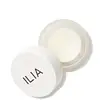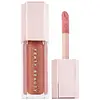What's inside
What's inside
 Key Ingredients
Key Ingredients

 Benefits
Benefits

 Concerns
Concerns

 Ingredients Side-by-side
Ingredients Side-by-side

Caprylic/Capric Triglyceride
MaskingMango Butter Dimer Dilinoleyl Esters/Dimer Dilinoleate Copolymer
EmollientCapryloyl Glycerin/Sebacic Acid Copolymer
Skin ConditioningBis-Diglyceryl Polyacyladipate-2
EmollientPolyglyceryl-10 Decaoleate
Skin ConditioningPolyglyceryl-10 Pentaoleate
EmulsifyingPolyglyceryl-10 Pentaisostearate
EmollientC10-18 Triglycerides
EmollientButyrospermum Parkii Butter
Skin ConditioningCera Alba
EmollientGlyceryl Stearate Se
EmulsifyingHydroxystearic Acid
CleansingAroma
Cocos Nucifera Oil
MaskingLactobacillus/Papaya Fruit Ferment Extract
AbrasiveSilica
AbrasivePolyhydroxystearic Acid
EmulsifyingRicinus Communis Seed Oil
MaskingCarica Papaya Seed Oil
HumectantSodium Hyaluronate
HumectantTocopherol
AntioxidantHydrogenated Castor Oil
EmollientStevia Rebaudiana Leaf/Stem Extract
MaskingGardenia Taitensis Flower Extract
Skin ConditioningSalicornia Herbacea Extract
Skin ConditioningUndaria Pinnatifida Extract
Skin ConditioningGeraniol
PerfumingLimonene
PerfumingLinalool
PerfumingCI 77891
Cosmetic ColorantCaprylic/Capric Triglyceride, Mango Butter Dimer Dilinoleyl Esters/Dimer Dilinoleate Copolymer, Capryloyl Glycerin/Sebacic Acid Copolymer, Bis-Diglyceryl Polyacyladipate-2, Polyglyceryl-10 Decaoleate, Polyglyceryl-10 Pentaoleate, Polyglyceryl-10 Pentaisostearate, C10-18 Triglycerides, Butyrospermum Parkii Butter, Cera Alba, Glyceryl Stearate Se, Hydroxystearic Acid, Aroma, Cocos Nucifera Oil, Lactobacillus/Papaya Fruit Ferment Extract, Silica, Polyhydroxystearic Acid, Ricinus Communis Seed Oil, Carica Papaya Seed Oil, Sodium Hyaluronate, Tocopherol, Hydrogenated Castor Oil, Stevia Rebaudiana Leaf/Stem Extract, Gardenia Taitensis Flower Extract, Salicornia Herbacea Extract, Undaria Pinnatifida Extract, Geraniol, Limonene, Linalool, CI 77891
Polybutene
Octyldodecanol
EmollientBis-Diglyceryl Polyacyladipate-2
EmollientTricaprylin
MaskingCera Microcristallina
Emulsion StabilisingPolyethylene
AbrasiveSilica Dimethyl Silylate
EmollientVp/Eicosene Copolymer
Vp/Hexadecene Copolymer
Butyrospermum Parkii Butter
Skin ConditioningMica
Cosmetic ColorantSorbitan Oleate
EmulsifyingSilica
AbrasiveOctyldodecyl Neopentanoate
EmollientEthylhexyl Palmitate
EmollientCaprylyl Glycol
EmollientButyrospermum Parkii Butter Unsaponifiables
Skin ConditioningAroma
Parfum
MaskingTribehenin
EmollientPentaerythrityl Tetra-Di-T-Butyl Hydroxyhydrocinnamate
AntioxidantSorbitan Isostearate
EmulsifyingTocopherol
AntioxidantTocopheryl Acetate
AntioxidantSynthetic Fluorphlogopite
Tetrahexyldecyl Ascorbate
AntioxidantLactic Acid
BufferingCalcium Sodium Borosilicate
Calcium Aluminum Borosilicate
Polyethylene Terephthalate
Palmitoyl Tripeptide-1
Skin ConditioningAcrylates Copolymer
Tin Oxide
AbrasiveCI 77891
Cosmetic ColorantIron Oxides
Benzyl Benzoate
AntimicrobialLimonene
PerfumingPolybutene, Octyldodecanol, Bis-Diglyceryl Polyacyladipate-2, Tricaprylin, Cera Microcristallina, Polyethylene, Silica Dimethyl Silylate, Vp/Eicosene Copolymer, Vp/Hexadecene Copolymer, Butyrospermum Parkii Butter, Mica, Sorbitan Oleate, Silica, Octyldodecyl Neopentanoate, Ethylhexyl Palmitate, Caprylyl Glycol, Butyrospermum Parkii Butter Unsaponifiables, Aroma, Parfum, Tribehenin, Pentaerythrityl Tetra-Di-T-Butyl Hydroxyhydrocinnamate, Sorbitan Isostearate, Tocopherol, Tocopheryl Acetate, Synthetic Fluorphlogopite, Tetrahexyldecyl Ascorbate, Lactic Acid, Calcium Sodium Borosilicate, Calcium Aluminum Borosilicate, Polyethylene Terephthalate, Palmitoyl Tripeptide-1, Acrylates Copolymer, Tin Oxide, CI 77891, Iron Oxides, Benzyl Benzoate, Limonene
 Reviews
Reviews

Ingredients Explained
These ingredients are found in both products.
Ingredients higher up in an ingredient list are typically present in a larger amount.
Aroma refers to an ingredient, or mixture of ingredients, that impart or mask a flavor.
The name is slightly confusing. This is because INCI associates aroma with flavor instead of smell.
Here is the official definition from the The International Cosmetic Ingredient Dictionary and Handbook:
“Aroma is a term for ingredient labeling used to identify that a product contains a material or combination of materials normally added to a cosmetic to produce or to mask a particular flavor.”
INCI shows the only purpose of aroma to be "flavouring".
However, due to regulation differences, some companies may use aroma in place of parfum.
In Canada, this ingredient only has to be listed in concentrations above 1%.
Learn more about AromaThis ingredient is lipid-based synthetic skin-conditioning agent derived from adipic acid and a mixture of fatty acids. It is often called a lanolin substitute.
As an emollient, it helps soften and hydrate the skin. Emollients create a barrier on the skin to trap moisture in.
Due to its fatty acid base, it may not be Malassezia folliculitis safe.
Learn more about Bis-Diglyceryl Polyacyladipate-2This ingredient is also known as shea butter. It is an effective skin hydrator and emollient.
Emollients help soothe and soften your skin. It does this by creating a protective film on your skin. This barrier helps trap moisture and keeps your skin hydrated. Emollients may be effective at treating dry or itchy skin.
Shea butter is rich in antioxidants. Antioxidants help fight free-radicals, or molecules that may harm the body. It is also full of fatty acids including stearic acid and linoleic acid. These acids help replenish the skin and keep skin moisturized.
While Shea Butter has an SPF rating of about 3-4, it is not a sunscreen replacement.
Shea butter may not be fungal acne safe. We recommend speaking with a professional if you have any concerns.
Learn more about Butyrospermum Parkii ButterCi 77891 is a white pigment from Titanium dioxide. It is naturally found in minerals such as rutile and ilmenite.
It's main function is to add a white color to cosmetics. It can also be mixed with other colors to create different shades.
Ci 77891 is commonly found in sunscreens due to its ability to block UV rays.
Learn more about CI 77891Limonene is a fragrance that adds scent and taste to a formulation.
It's found in the peel oil of citrus fruits and other plants such as lavender and eucalyptus. The scent of limonene is generally described as "sweet citrus".
Limonene acts as an antioxidant, meaning it helps neutralize free radicals.
When exposed to air, oxidized limonene may sensitize the skin. Because of this, limonene is often avoided by people with sensitive skin.
The term 'fragrance' is not regulated in many countries. In many cases, it is up to the brand to define this term. For instance, many brands choose to label themselves as "fragrance-free" because they are not using synthetic fragrances. However, their products may still contain ingredients such as essential oils that are considered a fragrance.
Learn more about LimoneneSilica, also known as silicon dioxide, is a naturally occurring mineral. It is used as a fine, spherical, and porous powder in cosmetics.
Though it has exfoliant properties, the function of silica varies depending on the product.
The unique structure of silica enhances the spreadability and adds smoothness, making it a great texture enhancer.
It is also used as an active carrier, emulsifier, and mattifier due to its ability to absorb excess oil.
In some products, tiny microneedles called spicules are made from silica or hydrolyzed sponge. When you rub them in, they lightly polish away dead skin layers and enhance the penetration of active ingredients.
Learn more about SilicaTocopherol (also known as Vitamin E) is a common antioxidant used to help protect the skin from free-radicals and strengthen the skin barrier. It's also fat soluble - this means our skin is great at absorbing it.
Vitamin E also helps keep your natural skin lipids healthy. Your lipid skin barrier naturally consists of lipids, ceramides, and fatty acids. Vitamin E offers extra protection for your skin’s lipid barrier, keeping your skin healthy and nourished.
Another benefit is a bit of UV protection. Vitamin E helps reduce the damage caused by UVB rays. (It should not replace your sunscreen). Combining it with Vitamin C can decrease sunburned cells and hyperpigmentation after UV exposure.
You might have noticed Vitamin E + C often paired together. This is because it is great at stabilizing Vitamin C. Using the two together helps increase the effectiveness of both ingredients.
There are often claims that Vitamin E can reduce/prevent scarring, but these claims haven't been confirmed by scientific research.
Learn more about Tocopherol